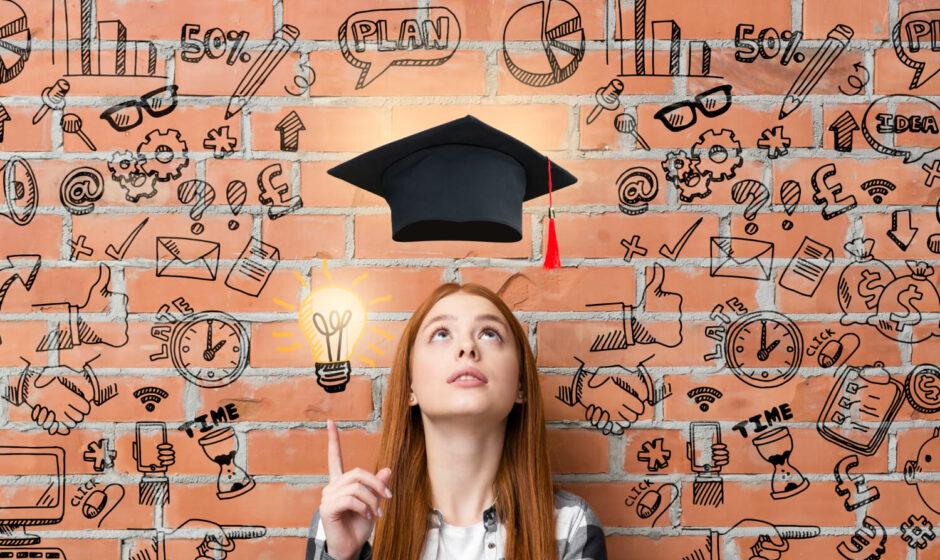Hello, amazing students! We’re dismantling the walls of dull classrooms these days and exploring the realm of improving aesthetics in the classroom. We’re not just talking about textbooks and whiteboards; we’re also breaking down the barriers to a learning environment that is both aesthetically pleasing and intellectually engaging. So grab a seat, because we’re about to set out on a journey to learn how design can transform education.
THE DESIGN GUIDE FOR AN OPTIMAL EDUCATIONAL SETTING
Let’s begin by analyzing the different facets of designing a stunning learning environment. It takes more than just painting the walls a new hue; it involves a complex dance of student involvement, color psychology, and the transformative power of movable seating. We’re igniting a revolution in education by transforming boring classrooms into inspirational spaces.
STUDENT INVOLVEMENT
Have you ever attended a class where you felt like a mindless bystander, ticking down the minutes until you could go outside? We are, in fact, rewriting the story. Engaging students is essential to a successful learning environment. It’s about taking an active role in your own education, not about becoming the teacher’s pet.
Encouragement of dialogue, teamwork, and practical projects transform a classroom from a dry lecture hall into a lively place where ideas are exchanged. When students participate fully, the classroom becomes an exciting place where knowledge is exchanged and teamwork is fostered.
COLOR PSYCHOLOGY
Let’s now discuss color psychology and the magical properties of color. Colors affect our mood and productivity profoundly; they are not simply for show. It functions similarly to a code that can either rouse your brain cells for a party or soothe you into a slumber. Picture a classroom decorated in colors that inspire: green for a hint of nature, blue for peaceful concentration, and yellow for creativity.
The goal of color psychology is to create a palette that supports an environment that is conducive to learning, not just tossing colors on the wall. So let’s say goodbye to drab beige and welcome a world of hues that pique our interest, stimulate our imagination, and transform each day into a visual feast for the eyes and brain.
ADJUSTABLE SEATING
Gone are the days of inflexible desk rows that give off the impression that you’re in a military exercise. The future is all about the game-changer – flexible chairs. Envision a classroom where you are not confined to one posture for extended periods of time. More than just comfort, adjustable seating allows you to modify the classroom to accommodate various teaching philosophies and instructional techniques.
Adjustable seating transforms a classroom into a multipurpose playground. It can be as simple as rearranging flexible desks for group work or comfortable seats that allow you to find your ideal learning posture. It’s similar to offering students the ability to personalize their classroom, creating a customized educational experience.
THE CHANGING CAPABILITIES OF WELL-DESIGNED LEARNING ENVIRONMENTS:
After laying the groundwork, let’s discuss the true game-changer: the capacity for profound transformation that comes from carefully designed learning environments. It’s important to create environments that support effective learning for both teachers and kids, not merely make things look nice. Get ready as we are about to reveal the wonders of intentional design in the classroom.
ENCOURAGING FOCUS AND PRODUCTIVITY
Well-designed learning spaces act as a productivity booster for instructors and learners alike. A purposefully planned classroom becomes an environment that naturally promotes involvement and attentiveness. No more wishing away your days in the classroom; instead, it transforms into an engrossing learning environment.
Every session becomes an exploration of learning with a well-planned learning environment that includes interactive displays, well-placed visual aides, and a layout designed to reduce distractions. It’s like taking a boring Monday and turning it into an amazing intellectual adventure.
BUILDING CONNECTION AND COOPERATION
Learning is a team activity, not an individual one. Well-planned learning environments are made to foster student connection and collaboration. An environment where ideas are exchanged, views are expanded, and relationships are forged is created when the seating is flexible and the area is designed to support group work.
Picture a classroom where students are at ease discussing ideas, working together on projects, and encouraging one another as they pursue their education. It is a hub of shared knowledge, a community of learners that transcends the conventional teacher-student relationship.
ENCOURAGING CREATIVITY AND CRITICAL THINKING
Education aims to foster both creativity and critical thinking in addition to fact memorization. Well-designed learning spaces have components that motivate both. The area is transformed into a canvas for expression, complete with specific creative areas and showcases that feature students’ work.
Imagine teaching in a classroom where student works of art decorate the walls, curiosity is piqued at every turn, and inquiry is encouraged in every crevice. This is an educational setting where the motto is “Your ideas matter, and your imagination is welcome here.”
THE CALL TO ACTION
Using Deliberate Design to Adopt the Art of Teaching
Now is the moment for a call to action as we navigate the wide ocean of educational opportunities. We’re not simply talking about making a few classrooms seem nice; we’re talking about embracing intentional design as a means of teaching. It’s a ground-breaking method that turns learning into a thrilling creative and intellectual journey.
ACCEPT PURPOSEFUL DESIGN
It’s time for educational establishments to accept purposeful design. It’s important to customize the learning environment to each class’s specific needs and dynamics rather than using a one-size-fits-all strategy. Make an investment in the thoughtful arrangement of furniture, the deft use of color, and the incorporation of educational technology.
ENGAGE STUDENTS IN THE PROCESS
Learners are active contributors to their own education, not only recipients of it. Include them in the process of designing. Ask for their opinions on preferred colors, seating configurations, and the classroom’s general atmosphere. Students are more eager to participate in class when they have a sense of ownership over the learning environment.
PRIORITIZE PROFESSIONAL DEVELOPMENT FOR EDUCATORS
Make professional development for educators a top priority. Thoughtful design is more than just moving furniture around; it’s a way of thinking. Give educators’ professional development a high priority so they can acquire the knowledge and abilities needed to create and execute deliberate learning environments. Let’s provide our teachers the tools they need to be the inspiration’s architects, establishing environments that develop the brains of the future.
DESIGN DYNAMIC LEARNING ENVIRONMENTS
Gone are the days of rigid classroom structures and stationary desks. It’s time to design flexible classrooms that can change with the times and meet the ever-changing needs of educators. Invest in technology that promotes interaction and collaboration, adaptable furniture, and multipurpose areas. Let’s dismantle the established framework and usher in a new era of education.
CONCLUSION
As we come to the end of our exploration into the topic of improving aesthetics in education, let’s imagine a day when each classroom serves as a work of inspiration and each lesson is a masterwork of knowledge. In order to turn education into a stimulating intellectual and artistic experience, intentional design education is a revolution rather than a passing fad.
Thus, educational establishments, let’s get our hands dirty and embrace deliberate design. Together, we can design learning spaces that ignite creativity, productivity, cooperation, and genius. It’s time to elevate the commonplace to the extraordinary and provide every kid with an exciting educational adventure.
Let’s work together to create a future in which a classroom’s visual appeal is just as significant as the lessons taught there. We applaud the teachers, designers, and students who are prepared to take on the thrilling task of improving education via the practice of deliberate design. Now let the revolution start!



